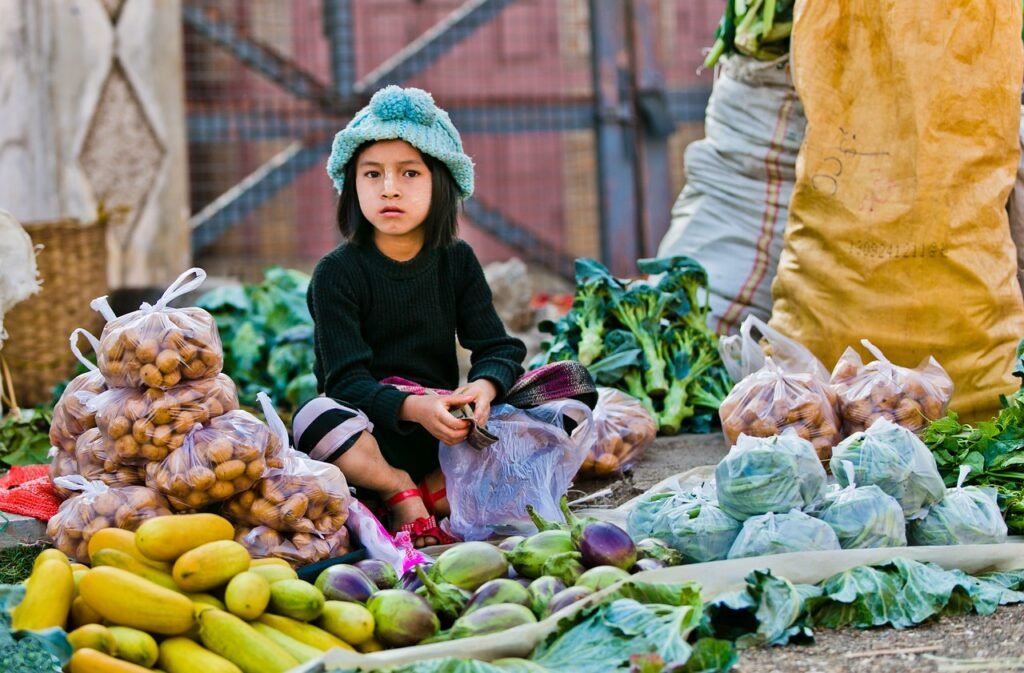Culinary Tourism: How To Plan A Food-Centric Trip
Imagine embarking on a journey where the rich flavors and diverse cuisines become the highlight of your travel experience. “Culinary Tourism: How to Plan a Food-Centric Trip” will guide you in embarking on such an adventure. This write-up serves as a compass, pointing you towards the best culinary destinations and giving you tips on how to strategically plan your itinerary to maximize your gastronomic journey. Embark on this flavorful venture and let your taste buds lead the way.
Understanding Culinary Tourism
When you hear the term, “traveling,” what is the first thing that comes to your mind? It could be the majestic view from a mountain peak, or the serene beauty of a tranquil beach. But did you know that travel can also involve your taste buds? That’s where culinary tourism comes into play.
Definition of Culinary Tourism
Culinary tourism, also known as food tourism, refers to experiencing a destination through its gastronomy. It allows you to explore a new city, region, or country through its cuisine. This doesn’t simply mean dining out, but involves exploring local food markets, brewpubs, wineries, food festivals, cooking classes, and even farm visits.
Importance of Food in Traveling
Food plays a vital role in traveling. It’s so much more than just fuel for your body; it’s a gateway to the culture, traditions, and history of a place. Sharing a meal or a drink can help you connect more deeply with locals, fostering a sense of kinship that goes beyond language or geographical barriers.
Emergence and Growth of Culinary Tourism
Over the years, culinary tourism has emerged as an individual sector within the travel industry. Its growth can be attributed to the rise of food-related television programs, blogs, and social media profiles. This increased exposure to international cuisines has nurtured a curiosity among people to experience these culinary delights firsthand – a trend which tourism organizations have been quick to capitalize on.
Researching Your Destination
Planning a food-centric trip requires more research than a regular vacation, but fret not, the key is to start early!
Exploring Different Food Cultures
Begin by reading books, watching shows, and reading blogs about the destination’s food culture. This will give you an insight into the types of dishes served and the way they are prepared and consumed.
Identifying Popular Local Dishes
Next, look for the must-try dishes in that region. Remember, what’s considered a delicacy in one region may be different from what you’re accustomed to. Be adventurous and open your mind (and palate) to new experiences.
Finding Reputable Food Tours and Food-Related Events
Finally, research reputable food tours, food festivals or events, and cooking classes happening in the area during your visit. Just remember to verify any claims and check customer reviews before making any bookings.

Creating a Food Itinerary
Similar to a sightseeing itinerary, a food itinerary outlines where and what you’ll be eating during your trip.
Prioritizing Food Experiences
Start by prioritizing the food experiences you’re most excited about. Since you may have limited time, focus on experiences that are unique to the place you’re visiting.
Scheduling Dining Opportunities
Next, schedule dining opportunities at local restaurants to try traditional dishes. Try to spread these out throughout your trip so you can sample a variety of cuisines.
Leaving Room for Spontaneous Discoveries
Don’t forget to leave some slots open for impromptu meals and discoveries. These unplanned culinary surprises could turn out to be the highlight of your trip.
Booking Food Experiences
With lots of exciting food experiences identified, it’s time to make your bookings.
How to Select Food Tours
When selecting food tours, go for those that include local establishments and promise an immersive experience. Look out for tours that include experiences like market visits, food tastings, and occasionally, cooking demonstrations too.
Making Reservations for Popular Eateries
For eateries that are popular, it’s advised to make a reservation in advance to avoid queues or disappointments. Also, be mindful of their operating hours to ensure you don’t miss out.
Pre-booking Cooking Classes or Workshops
Similar to food tours and popular eateries, it’s best to pre-book hands-on experiences like cooking classes or workshops. These can fill up fast, especially if they feature a renowned chef.

Documenting Your Food Experiences
Why not transform your food tour into a memory-filled journey that you can reflect upon later?
Photographing Your Food Adventures
Make it a point to photograph all your food adventures. These snapshots won’t just serve as great conversation starters, but they could potentially inspire fellow food enthusiasts to explore the world of culinary tourism.
Keeping a Food Journal
Maintaining a food journal can help you record detailed accounts of your culinary experiences. You can jot down the names of dishes, the ingredients, the flavors, and even your personal thoughts and feelings about the meals.
Sharing Your Experience on Social Media
Social media platforms are another powerful way to document and share your gastronomic adventure. By tagging locations and using appropriate hashtags, you can inspire others and get inspired in return.
Respecting Local Food Cultures
Being respectful is key when you’re immersing yourself in the local food culture.
Understanding Local Dining Etiquette
Before you embark on your trip, be sure to familiarize yourself with the dining etiquette in your destination. This will help you avoid unintentionally offending any local customs.
Learning About Food Origins and Traditions
Learning about the origin of dishes and the traditions that accompany them can give you a deep appreciation for the food and the people behind it.
Promoting Sustainable Dining and Travel Practices
Finally, promote and practice sustainable dining and travel. Try to support local businesses, eat at restaurants that source ingredients locally, and keep waste to a minimum.

Dealing with Dietary Restrictions
Navigating dietary restrictions while traveling can be a bit challenging, but it’s not impossible.
Communicating Your Needs
Always communicate your dietary needs clearly when eating out or booking food experiences. Many places are accommodating if they have advance notice.
Research on Local Cuisine for Suitability
Before your journey, research the typical dishes in your destination and assess their suitability for your dietary needs. This information can guide your choices once you’re on the ground.
Carrying Necessary Dietary Supplements
Finally, consider bringing any necessary dietary supplements or alternatives that may not be readily available or could be expensive at your destination.
Health and Safety Considerations
Understanding health and safety precautions related to food is crucial.
Ensuring Clean and Safe Eating
Ensure you’re eating at clean and reputable places. Remember, the cost of treating a stomach bug can be much higher than spending a bit more on good quality food.
Avoiding Foodborne Illnesses
Prevent foodborne illnesses by following basic precautions, like washing hands before meals, drinking bottled water, and avoiding uncooked or undercooked foods.
Being Aware of Potential Allergens
If you have any food allergies, learn how to say them in the local language or carry a card with this information written down.
Budgeting for Your Food Trip
Adequate budgeting can enhance your culinary tourism experience.
Estimating Daily Food Expenses
Start by estimating your daily food expenses. This should include meals, snacks, drinks, and any food-related attractions.
Splurge vs Save: Deciding When to Spend More on Food
While budgeting, decide on when to splurge and when to save. You might be willing to spend more on unique food experiences while conserving resources for regular meals.
Factoring in Costs for Specialty Food Experiences
Additionally, don’t forget to factor in the costs for special experiences like gourmet dining, wine tastings, or cooking classes.
Culinary Souvenirs
Bringing home culinary souvenirs can let you prolong your food journey.
Buying Local Produce and Products
Local produce and products are the ideal souvenirs as they represent a small piece of your journey and support local businesses.
Understanding Regulations on Bringing Food Across Borders
Before purchasing, however, make sure you understand the regulations on bringing food items across borders to avoid any unpleasant surprises at customs.
Preserving and Using Your Food Souvenirs
Lastly, learn how to preserve and use your food souvenirs. This could be as simple as storing them properly or incorporating them into your own cooking once you’re back home.
Culinary tourism is an exciting way to explore a destination while satisfying your gastronomic cravings. With ample research, careful planning, and a willingness to try new things, you’re sure to have a remarkable food-centric trip. Bon appétit!




